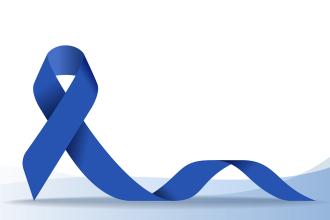Cancers presumed to be caused by exposures in firefighting
Under the Workers Compensation Act, when a firefighter who was regularly exposed to the hazards of a fire scene contracts a prescribed occupational disease, the disease must be presumed to be due to the nature of the worker’s employment as a firefighter.
The Firefighters’ Occupational Disease Regulation lists the following nine cancers as prescribed occupational diseases that are causally related to the occupation of firefighting:
1. Primary leukemia
2. Primary non-Hodgkin’s lymphoma
3. Primary bladder cancer
4. Primary site brain cancer
5. Primary colorectal cancer
6. Primary kidney cancer
7. Primary lung cancer
8. Primary testicular cancer
9. Primary ureter cancer
The Workers Compensation Act states that the presumption applies to a firefighter who:
a) Has worked as a firefighter for a minimum cumulative period prescribed for the disease—these periods are set out in the Regulation and are specific to each disease;
b) Throughout the period has been regularly exposed to the hazards of a fire scene, other than a forest fire scene; and
c) Is first disabled after 11 April 2005.
The minimum cumulative period prescribed for each of the nine cancers is set out below:
1. 5 years for primary leukemia
2. 20 years for primary non-Hodgkin’s lymphoma
3. 15 years for primary site bladder cancer
4. 10 years for primary site brain cancer
5. 20 years for primary site colorectal cancer
6. 20 years for primary site kidney cancer
7. 15 years for primary site lung cancer
8. 20 years for primary site testicular cancer
9. 15 years for primary site ureter cancer
There are also minimum non-smoking periods prescribed for previous smokers who contract primary lung cancer. As a physician, if you have a patient who is a firefighter who is diagnosed with one of the prescribed occupational diseases, please advise your patient about the occupational disease presumption for firefighters in the Workers Compensation Act and the worker’s potential entitlement to workers’ compensation coverage. A representative at WorkSafeBC can be reached at 604 279-8158 if there are any questions.
Please advise your patients to contact WorkSafeBC to see if they are eligible for benefits. Your patient can call the WorkSafeBC Teleclaim number to apply for WorkSafeBC benefits. Teleclaim may be reached at 1 888 WORKERS (1 888 967-5377) or #5377 for Telus, Rogers, and Bell Mobility customers.
The links to the relevant legislation and regulation are as follows:
• The relevant section of the Workers Compensation Act (Part 1, Division 2, Section 6.1) may be viewed at: www.bclaws.ca/EPLibraries/bclaws_new/document/ID/freeside/96492_01#section6.1
• The Firefighters’ Occupational Disease Regulation maybe viewed at: www.bclaws.ca/EPLibraries/bclaws_new/document/ID/freeside/11_125_2009#section2
Schedule B of the Act
Schedule B of the Act provides a presumption in favor of workers (not specific to firefighters) that a disease was caused by employment if the worker:
• Develops a disease listed in Schedule B; and
• At or immediately before the date of disablement was employed in the process or industry described opposite such disease.
The primary purpose of Schedule B is to avoid the effort of repeatedly producing and analyzing evidence of work-relatedness where WorkSafeBC has concluded, based on the scientific and medical evidence, that there is a substantially greater incidence of the disease in a particular industry or process than there is in the general population.
For example, if a worker contracts mesothelioma, and at or immediately before the date of the disablement was employed in an industry where there was exposure to airborne asbestos dust, the Schedule B presumption is that the mesothelioma was caused by the worker’s employment, unless the contrary is proven.
Similarly, the Schedule B presumption would apply where a worker contracts angiosarcoma of the liver where there is exposure to vinyl chloride monomer.
To find all the listed cancers and presumptions in Schedule B, please visit www.bclaws.ca/EPLibraries/bclaws_new/document/ID/freeside/96492_05.
—Susan Hynes, BA, MBA
Director, Compensation and Assessment Policy
Policy and Research Division, WorkSafeBC
hidden
This article is the opinion of WorkSafeBC and has not been peer reviewed by the BCMJ Editorial Board.


I have been a volunteer fire fighter for 40 years. I Was diagnosed with rectel cancer and still recovering from surgery.